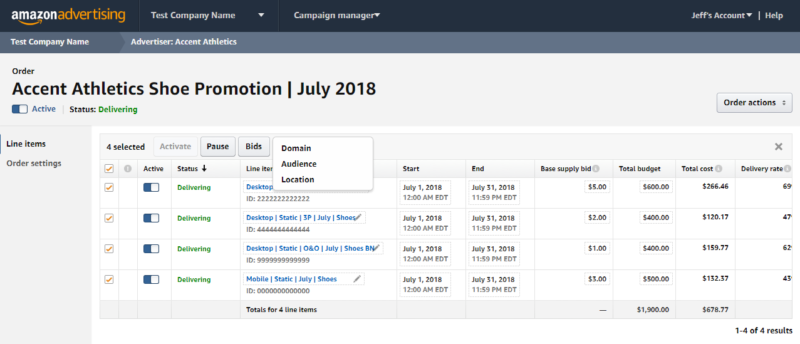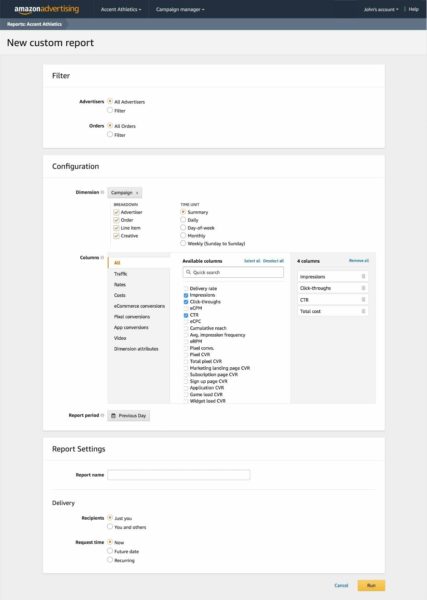Amazon’s streamlines DSP usability as it continues ad biz ramp up
Changes to the demand-side platform, available to advertisers spending more than $35K, are aimed at improving usability and workflow.
Amazon Advertising has improved the user interface and functionality of its Demand-Side Platform (DSP), in keeping with its ambition of growing ad revenue and improving the ease of use of its tools. The DSP is used by larger advertisers — those spending a minimum of $35,000 — to programmatically buy display and video ads across Amazon sites and apps, as well as on its publisher partner sites and on third-party exchanges.
What’s changed? Specifically, Amazon added the ability to perform bulk editing of targeting settings for domain, audience, and location — a workflow modification that should save advertisers from the need to perform repetitive data entry.

Image provided by Amazon. Click to view larger.
It also improved the navigation and look and feel overall, making buttons, toggles and campaign status indicators more prominent. Amazon also added custom reporting capabilities that let advertisers choose what columns to include in their reports, save them within the platform and have them run and automatically sent to themselves and others on a recurring basis if that’s desired.

Image provided by Amazon. Click to view larger.
Additionally, Amazon pledged improvements to the process for getting creatives approved, saying it is now able to more quickly request modifications of creative when that is needed.
These enhancements follow a number of moves Amazon has made to improve the usability of its advertising offerings. In recent months, Amazon has added dynamic bidding and bid adjustments to its Sponsored Products ads and has enabled new customer acquisition metrics for Sponsored Brand campaigns.
Why you should care. If you’re one of those advertisers looking to increase your investment on Amazon this year, the changes — and all of the company’s efforts to improve the efficiency of its processes — should be heartening. Though marketers we surveyed for our Amazon Advertising Forecast said they planned to boost spending on the platform this year, they cited the poor user interface and clunky workflow as impediments. These enhancements are aimed at addressing these concerns, with Amazon saying in a blog post that it prioritized changes based on advertiser feedback.
It stands to reason that Amazon is listening closely to advertiser feedback as it builds its advertising business. Last year, it became the third-largest online ad seller after Google and Facebook, bringing in $3 billion in ad dollars in the fourth quarter alone.
Related stories
New on MarTech